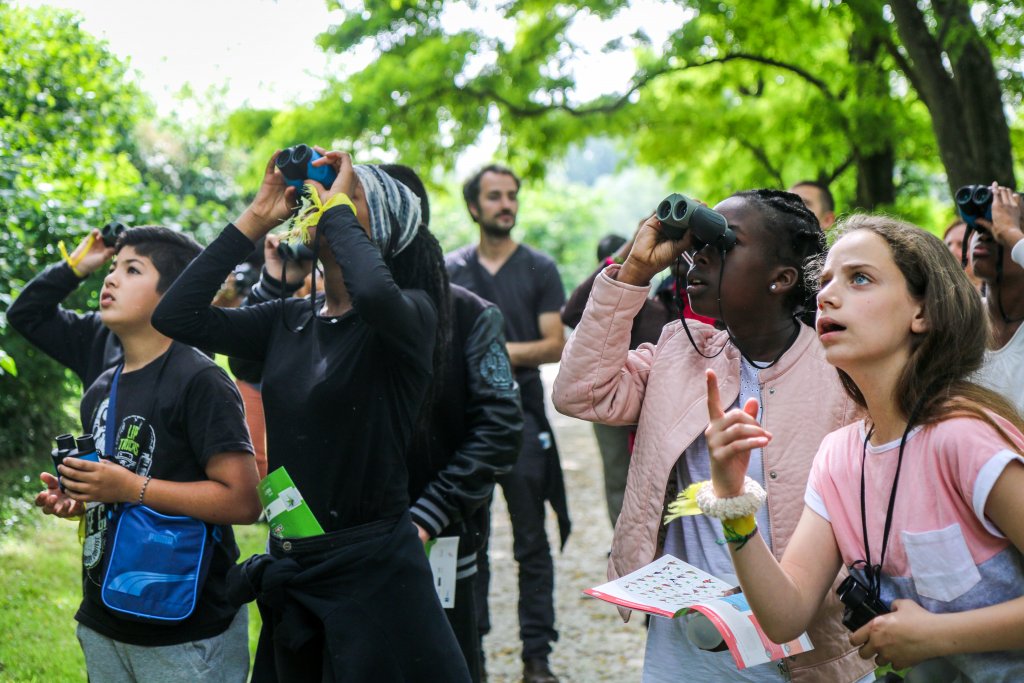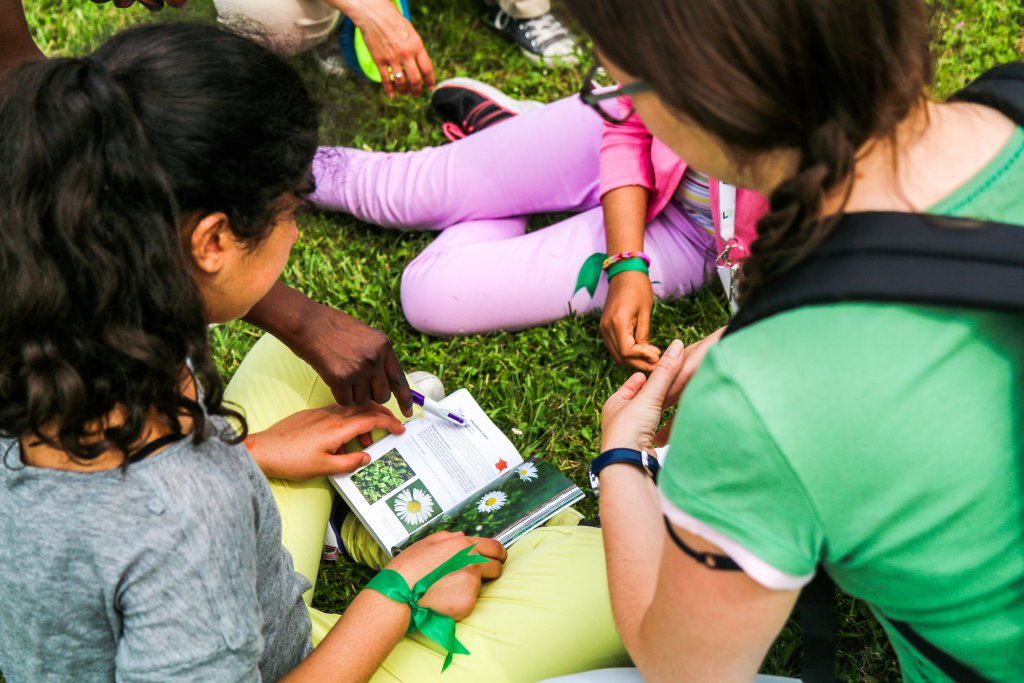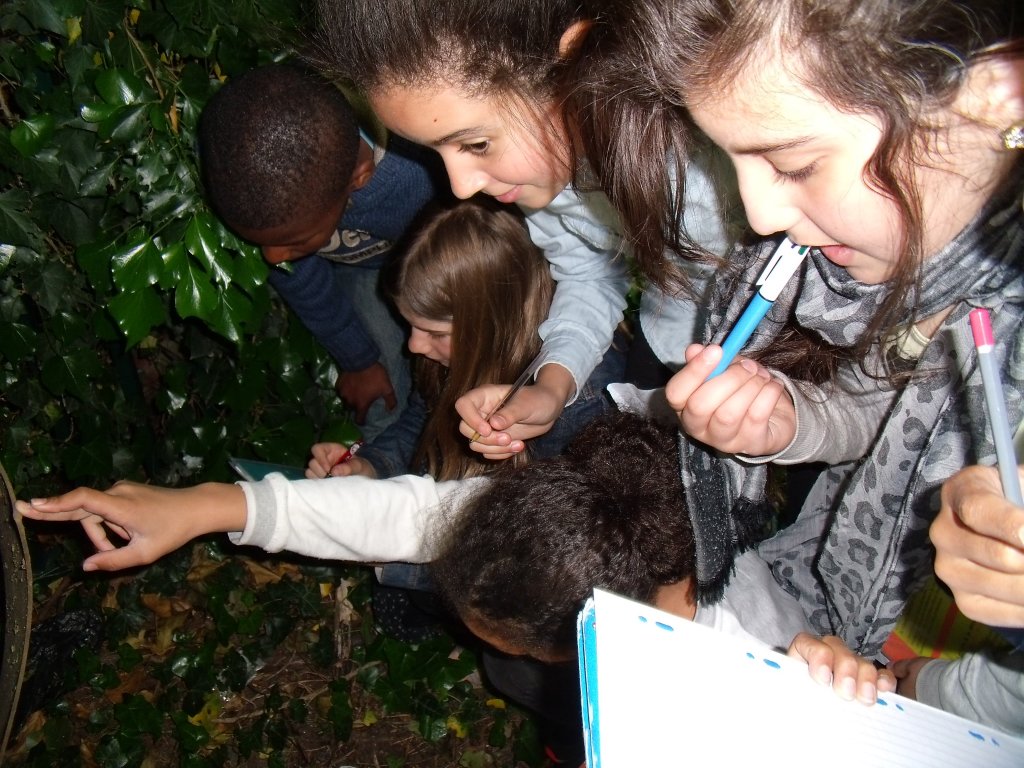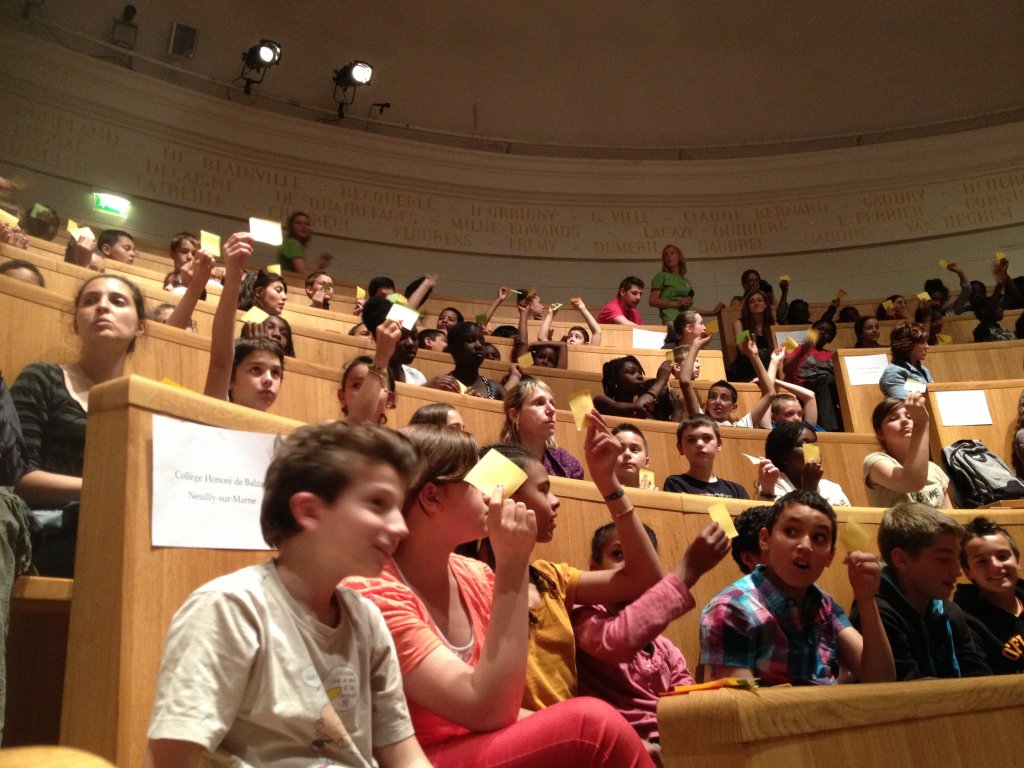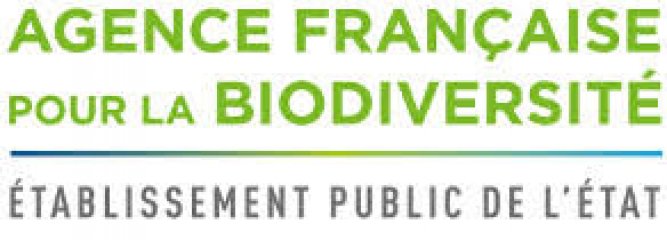Objectives
Vigie-Nature École offers French teachers the opportunity to monitor what is known as “common” biodiversity by implementing scientific protocols with their students.
Specific actions
Ten citizen’s observatories are currently available for preschool to high school-aged students to study various groups of species such as snails, insects, urban flora and birds.
Project description
This observatory is part of the Vigie Nature network.
Talking to people about real-world examples and the local area is essential for raising awareness of the issues related to biodiversity loss. Outdoor field trips with students to show them the diversity of the species all around in everyday life help reconnect them with nature and prepare them for a discussion on measures that can be taken to conserve it.
To encourage this practice, the Vigie-Nature École program offers French teachers the opportunity to monitor what is known as “common” biodiversity by implementing scientific protocols with their students. Eight observatories are available for preschool to high school-aged students to study various groups of animals throughout mainland France such as snails, pollinating insects, bats, earthworms, urban flora, birds, algae and shellfish. The design and development of this program has been entrusted to a Life and Earth Sciences teacher, in collaboration with the General Inspectorate of the French Ministry of Education, to ensure that the implementation of Vigie-Nature École in schools is fully integrated into the school curriculum. Teachers will therefore be able to experiment with new, practical activities that are stimulating for students, across one or several subjects, as desired.
These protocols are developed by researchers at the Muséum national d’histoire naturelle and are effective vehicles for introducing students to a scientific approach in a practical way. Students are encouraged to observe and identify species, to understand the importance of information collected under “standardized” conditions (observation period, area covered, time of year, etc.) or documented conditions (weather, type of environment, etc.).
The data collected by students feed directly into scientific research on biodiversity and on how biodiversity is responding to global changes. The scientific and educational grounding of the program means that classes receive feedback in the form of popularized articles and participation reports, ensuring that students can assess biodiversity in their own schools. These resources lead participants to reflect on the steps to be implemented to promote biodiversity.
How to participate
We want to make it as simple as possible for teachers to participate. Registration can be done at any time of the year; participation is free and requires only inexpensive equipment, and observations can be carried out on school grounds.
The Vigie-Nature École website has many resources to support teachers, including videos presenting the protocols and resources on taxa biology. In addition, a “participant booklet” for each observatory can be downloaded from our website. The booklets explain the research objectives and provides the necessary resources to implement the data collection protocols (count sheets and ready-to-use identification keys for the relevant species).
Teachers must also register on our website to access the area where they can share their observations with the program. The first step is for them to create one or more classes and at least one observation area. This allows scientists to get information on the context for the observations, such as whether the environment is urban or rural and whether plant protection products are used in the area. There is likely to be a link between this information and the distribution of observed plants and animals, which is why it is necessary for data analysis. Once these steps have been completed, you are ready to go!
Before going outdoors, we recommend taking a few minutes to introduce students to the concept of citizen science. They will most certainly be unfamiliar with this new way of doing science and are likely to be interested in the idea of collecting information that is truly useful to researchers. We also recommend explaining each step of the protocol. The aim is for students to learn that protocol-induced standardization allows scientists to compare observations made at point A with those made at point B: the observation period and method are the same regardless of where the observations are made and who makes them. Students will also learn why researchers need data for many areas and periods.
Finally, we suggest that students be trained on how to use the identification tools in class, which will make the field session all the easier! Photo quizzes are available on our website to help with this step.
Once in the field, students will note the observation date, the abundance of each species observed, and any additional information required for each observatory. Back in the classroom, the teacher or students will connect to the Vigie-Nature École website to send the data to the Muséum researchers.
At the end of the school year, a participation report, with statistics and results for each observatory, is sent out to the individuals who have registered on the website. The document includes graphs that show how the observations made in a particular school compare with all the data collected. Teachers will be able to understand whether observing four species of snails in one school, for example, means that biodiversity is in a healthy or unhealthy state. Explanations are provided to interpret the result.
The participation
 Required equipment
Required equipment
Varies by observatory.


 Project created
Project created
 All over France
All over France
